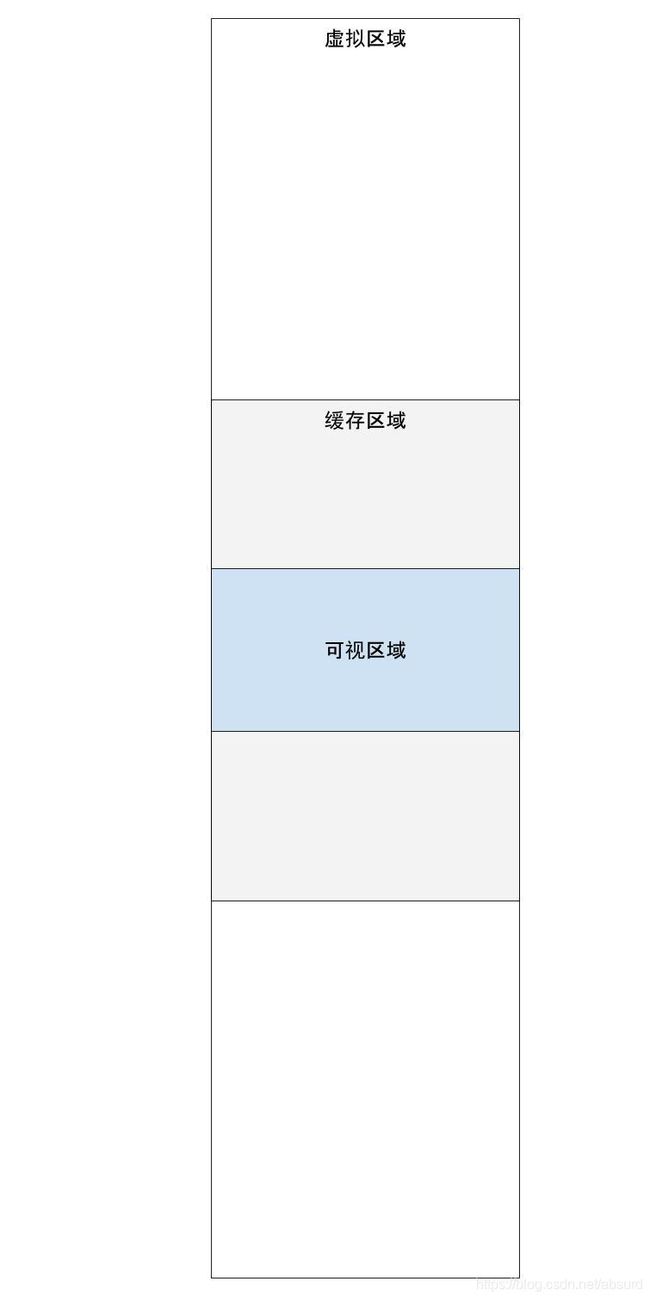AWTK 表格视图的基本用法
AWTK 表格视图的基本用法
AWTK Table View的基本特点:
- 列表项无需事先创建。
- 数据无需全部加载到内存。
- 轻松支持数千万条数据记录。
- 表格中可以放文本、图片、编辑器、进度条、滑块和下拉框等各种控件。
1. 基本概念
-
table_view_t 是表格视图的外壳,它的主要功能是协调 table_client_t 和滚动条。
-
table_header_t 是表格的标题,它其实只是一个普通的容器,完全可以用 view 代替,但用 table_header_t 更具可读性。
-
table_client_t 是表格的数据区,它是一个 table_row_t 的容器。
-
table_row_t 表示表格中的一行,它只是个容器,里面可以文本、图片、编辑器、进度条、滑块和下拉框等各种控件。
table_view_t 的为了解决大量数据的问题,我们把数据分为三类:
-
虚拟区域。代表全部数据,它是虚拟的,无需加入到内存中来。
-
缓存区域。代表实际在内存中创建的部分,为了让滑动效果比较流畅,缓存区域是可视区域的 3 倍。
-
可视区域。代表当前呈现在窗口上的部分。
当拖到滚动条改变可视区域时,如果可视区域超出缓存区域,则调用用户提供的回调函数,更新缓存区域的位置和数据。
2. 用法
2.1 编写 XML
table_view 由 table_header(可选)、table_client 和 scroll_bar 组成。
在 table_client 中,只需要写一个 table_row,这个 table_row 只是作为模版,由 table_client 根据需要创建。
示例:
<table_view x="10" y="10" w="-20" h="-80">
<table_header x="0" y="0" w="-12" h="30" name="title" children_layout="default(r=1,c=0,s=5,m=5)">
<label w="20%" text="Name" />
<label w="20%" text="Color"/>
<label w="40%" text="Value" />
<label w="20%" text="Action" />
table_header>
<table_client name="table_client" x="0" y="30" w="-12" h="-30" row_height="40">
<table_row children_layout="default(r=1,c=0,s=5,m=5)">
<label name="name" w="20%" h="100%" text="name" />
<combo_box name="color" readonly="true" w="20%" h="80%" options="red;green;blue"/>
<slider name="value" w="40%" h="80%" />
<button name="remove" w="20%" h="80%" text="Remove" />
table_row>
table_client>
<scroll_bar_d name="vbar" x="right" y="0" w="12" h="100%" value="0"/>
table_view>
2.1 编写准备数据的回调函数
table_client 不需要预先创建全部的 table_row,而是在需要时调用回调函数,去填充指定行的数据。以当前的行号和 table_row 对象为参数,实现者在回调函数中,加载当前行的数据,然后设置到 row 的子控件中。
/**
* @method table_client_set_on_load_data
* 设置 加载数据的回调函数。
* @param {widget_t*} widget widget 对象。
* @param {table_client_on_load_data_t} on_load_data 回调函数。
* @param {void*} ctx 回调函数的上下文。
*
* @return {ret_t} 返回 RET_OK 表示成功,否则表示失败。
*/
ret_t table_client_set_on_load_data(widget_t* widget, table_client_on_load_data_t on_load_data,
void* ctx);
示例:
static ret_t on_load_data(void* ctx, uint32_t index, widget_t* row) {
char name[32];
tk_snprintf(name, sizeof(name), "name:%u", index);
widget_set_text_utf8(widget_lookup(row, "name", TRUE), name);
widget_set_value(widget_lookup(row, "value", TRUE),index%100);
widget_set_value(widget_lookup(row, "color", TRUE), 0);
return RET_OK;
}
...
table_client_set_on_load_data(client, on_load_data, client);
...
在本回调函数中,还可以调整控件的大小,设置控件的 style。
2.2 编写注册事件的回调函数
有时候,我们不是简单的显示数据,还要对数据进行编辑。此时需要设置一个回调函数,这个回调函数在 table_row 创建完成后调用。
/**
* @method table_client_set_on_create_row
* 设置 创建行时的回调函数,在回调函数中可以注册控件的事件。
* @param {widget_t*} widget widget 对象。
* @param {table_client_on_create_row_t} on_create_row 回调函数,在回调函数加载数据。
* @param {void*} ctx 回调函数的上下文。
*
* @return {ret_t} 返回 RET_OK 表示成功,否则表示失败。
*/
ret_t table_client_set_on_create_row(widget_t* widget, table_client_on_create_row_t on_create_row,
void* ctx)
示例:
static table_row_t* table_row_of(widget_t* child) {
widget_t* iter = child;
while(iter != NULL && !tk_str_eq(widget_get_type(iter), WIDGET_TYPE_TABLE_ROW)) {
iter = iter->parent;
}
return TABLE_ROW(iter);
}
static ret_t on_value_changed(void* ctx, event_t* e) {
table_row_t* row = table_row_of(WIDGET(e->target));
log_debug("changed: %d value=%d\n", row->index, widget_get_value(WIDGET(e->target)));
return RET_OK;
}
static ret_t on_color_changed(void* ctx, event_t* e) {
table_row_t* row = table_row_of(WIDGET(e->target));
log_debug("changed: %d value=%s\n", row->index, combo_box_get_text(WIDGET(e->target)));
return RET_OK;
}
static ret_t on_remove_clicked(void* ctx, event_t* e) {
table_row_t* row = table_row_of(WIDGET(e->target));
log_debug("clicked: %d \n", row->index);
return RET_OK;
}
static ret_t on_create_row(void* ctx, uint32_t index, widget_t* row) {
widget_child_on(row, "value", EVT_VALUE_CHANGED, on_value_changed, NULL);
widget_child_on(row, "color", EVT_VALUE_CHANGED, on_color_changed, NULL);
widget_child_on(row, "remove", EVT_CLICK, on_remove_clicked, NULL);
return RET_OK;
}
...
table_client_set_on_create_row(client, on_create_row, client);
在控件的事件处理函数中,可以通过 table_row_of 获取 row 对象,然后通过 row 对象的 index 属性,获取当前的行号,然后将数据保存到当前的行(如数据库)。


